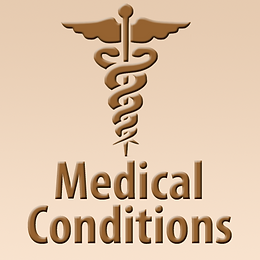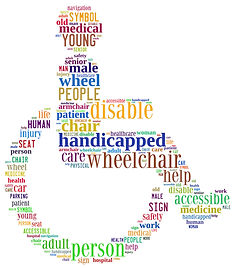Book Lesson
Disorders, Physical Limitations and Prosthetics
To be safe while driving, you need to use various skills to control your vehicle while remaining aware of your surroundings at all times. It’s a complicated task, and for this reason, many medical conditions can influence your ability to drive.
Any disorder or physical condition can interfere with the alertness, strength, physical coordination, agility, judgment, attention, knowledge, or skills necessary to safely operate a motor vehicle. Driving is a complex, fast-paced activity; in fact, a typical driver makes 20 decisions per mile, with less than half a second to respond to changes in the roadway.


Do you currently suffer from a medical condition or physical limitation that impacts your ability to drive or your driving performance?
ADHD/ADD
MID (Multiple Identity Disorder)
Neurological Disorders
PDD-NOS (Pervasive Developmental Disorders)
Multiple Sclerosis / Cerebral Palsy
Limited Mobility
Spina Bifida
Cognitive, Spatial and Motor skill issues
Amputation / Prosthetics
Alzheimer’s /Dementia
Eye Disorders
Neuropathy / Arthritis
Unfortunately, the ability to drive safely can be negatively affected by a variety of factors beyond a person’s control. Driving safely requires excellent physical and mental skills, and good judgment. Many medical conditions or disabilities can negatively affect your driving, putting you and others at risk on the road.

Others told you, “You can’t.”
Now, let us show you, you “CAN”
We will instruct you on what steps can be taken to address your situation. We customize your lessons to your needs and the way you learn so that you will be able to understand what you need to do and can easily develop the skills you need to be a safe driver.
Mobility Limitations
A person’s ability to operate a vehicle without pain or difficulty is an essential part of safe driving. Health or medical conditions that make it difficult to operate the car’s controls, adjust positions in the car, turn from side to side to check traffic, turn the steering wheel easily or react quickly to what is happening become safety hazards in many driving situations. This is especially true when driving in high-speed traffic, at busy intersections and whenever pedestrians or cyclists are present.

Thanks to advanced technologies and vehicle adaptation it is possible to drive with permanent limb and spinal disabilities, including cases of amputation, severe arthritis, cerebral palsy, muscular dystrophy amongst other limiting disabilities.


Fears, Phobias, and Anxiety
Driving phobia and anxiety is one of the most common. It can be debilitating, especially for people who need to drive for a living, to get to work by car or in general enjoy the independence driving affords.
A phobia is a disorder in which the body reacts in what is called “flight or fight” - either to fight for our lives or to run for them. We experience the same feelings of anxiety and fear, but in situations where there’s absolutely no need for “flight or fight”. It’s as if our body and mind have lost all sense of proportion, and internally screams “DANGER” at the littlest thing happening. The fear reaction is every bit as real as if the cause was really life-threatening.


You feel uncomfortable and anxious when you drive because your brain has tricked you into feeling anxious.
- Are you dealing with anxiety or panic attacks while driving and tired of the anxious, scary thoughts that seem to come along with the drive? Tired of symptoms such as trembling, sweating, palpitations, dizziness, feelings of unreality, or thoughts of losing control, crashing or dying?
- Are you having difficulty driving on highways, in congestion or feel afraid to maneuver your car during certain situations?
The level of the symptoms that people with phobias experience varies a great deal, from mild anxiety to very severe panic and terror. While some simply feel a little nervous when behind the wheel, others can barely cope with the anxiety.
It may be helpful to understand what the cause is, but it’s not necessary to the fix. You can’t cure it. We will show you how to manage it.
Do you want to learn how to drive with confidence, comfort, and peace of mind?
You will no longer need to limit how far you can drive or be concerned about how far you have driven. You will be able to drive on busy highways, in traffic or alone.
You can get back the freedom and enjoyment of driving you once had, and put behind you the anxiety or panic attacks you encountered.

.png)